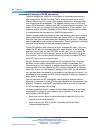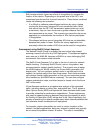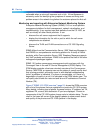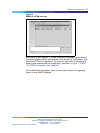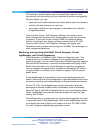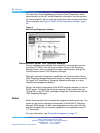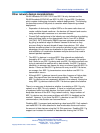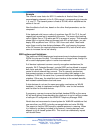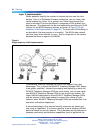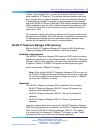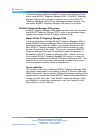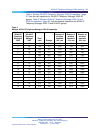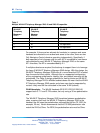
56 Planning
channels, which is detrimental to voice devices. As a general policy, for
large amounts of data, use 802.11a for data and 802.11b for voice, but
leave 802.11g disabled.
Alternately, if there are few 802.11b/g data devices and the WLAN is to be
used primarily for voice, consider enabling 802.11g support. The goal is to
carefully control the number of data devices that share radio resources
with voice devices.
For example, if a large number of laptops exist in a campus and if 802.11g
mode is enabled, it is probable that a large proportion of those laptops use
802.11g (2.4 GHz) for connectivity, which makes it much more difficult to
provide good quality voice for handsets. If 802.11g is disabled, it is probable
that a large proportion of those laptops use 802.11a (5 GHz) because it
offers much higher throughput compared with 802.11b, and voice quality
benefits.
Access Point interference
When more than three APs are deployed, the APs themselves are a
significant source of interference. This is known as cochannel interference.
Therefore, it is important to consider how channel reuse impacts network
capacity.
To maximize the distance between APs operating on the same channel, tile
the channels. To scale capacity, add more APs in the same geographic
region and at the same time, reduce the transmit power of each AP.
However, the overall throughput increase does not increase proportionally
with the number of APs that are added because each individual AP loses
throughput, even though the number of APs per square foot is increasing.
Note that the biggest loss of per-AP throughput occurs when going from
nonchannel-reuse to reusing channels. For more information about this
subject, see the whitepaper available from w
ww.nortel.com.
The goal is to achieve the required call density for the number of calls
per square foot. Getting the most calls per AP is not a useful objective of
capacity planning. The parameters that must be tuned to engineer a voice
network for capacity are:
•
channel reuse factor (that is, the number of channels in the channel plan)
•
transmit power of each AP
•
the radius of the cell (that is, based on the physical distance between
APs)
Because of the complexity of this topic and the simulation data that is
required, it is not possible to discuss tuning all three variables or even two
variables at a time. An example of a light to medium office environment
(mostly cube space but some walls) is provided instead.
Nortel Communication Server 1000
WLAN IP Telephony Installation and Commissioning
NN43001-504 01.02 Standard
Release 5.0 15 June 2007
Copyright © 2004-2007, Nortel Networks
.



